 |
on (#715F1)
Bluesky is adding a dislike button as a way to signal the kind of posts you don't want to see in your Discover feed. The experiment is part of several new ideas Bluesky is exploring to a improve conversations on its platform.The new experiments Bluesky is running are primarily built around the notion of "social proximity." The company says it's aiming to build a system that maps your place in a "social neighborhood" of "people you already interact with or would likely enjoy knowing." By prioritizing replies and posts from the people in your general "neighborhood," the company believes it can make conversations "feel more relevant, familiar, and less prone to misunderstandings." Following that logic, the beta test of the dislike button (which sounds private, rather than public-facing) will "help the system understand what kinds of posts you'd prefer to see less of," but could also affect reply rankings in your threads and in the threads of other people in your social neighborhood.The social platform already offers a way to limit replies to only people who follow you, as Bluesky CTO Paul Frazee noted in a recent post, but the company doesn't want to make that the only option." Bluesky is also experimenting with adjusting how the Reply button works by making you see the whole thread first when you tap the button, rather than dumping straight into a new blank post. Combined with a new model for detecting bad replies, the company thinks it'll improve the general social climate.Charitably, these tweaks sound like another way Bluesky is trying to give users more control over what they see on the platform, in the same way it does with things like notifications. Less charitably, you could read the "social neighborhood" concept as a way to entrench users in their "filter bubble" rather than address larger moderation issues.Recently, Bluesky has been criticized by users for failing to remove the accounts of people who allegedly violate the company's community guidelines. Ensconced in a social neighborhood, those critics wouldn't necessarily see offensive posts, nor would a poster see their critics. That might lead to less conflict overall, but it could also impact more productive forms of disagreement in the process.This article originally appeared on Engadget at https://www.engadget.com/social-media/bluesky-experiments-with-dislikes-and-social-proximity-to-improve-conversations-205226194.html?src=rss
|
 Engadget is a web magazine with obsessive daily coverage of everything new in gadgets and consumer electronics
Engadget is a web magazine with obsessive daily coverage of everything new in gadgets and consumer electronics
| Link | https://www.engadget.com/ |
| Feed | https://www.engadget.com/rss.xml |
| Copyright | copyright Yahoo 2025 |
| Updated | 2025-12-08 15:48 |
 |
on (#715D0)
While YouTube TV is Engadget's pick for the best live TV streaming service, it isn't for everyone, especially right now. Google and Disney's ongoing carriage dispute means subscribers don't have access to channels like ABC and ESPN, and recent price hikes means paying for YouTube TV now costs a minimum of $83 a month.Whether you've switched to another service to hold on to your favorite channels or just want to save some money, there's ample reasons to cancel or pause your subscription right now. Here's what you should know about cancelling or pausing your YouTube TV subscription.How to cancel your subscription on mobile and webThe process for canceling your YouTube TV subscription is the same whether you're doing it inside the YouTube TV app or from a web or mobile browser, provided you're paying Google directly for access.
|
 |
by Lawrence Bonk on (#715AN)
DJI just announced the Neo 2 selfie drone, a follow-up to last year's original. This upgraded model includes a whole lot of new features. Just make sure to set DJI's website to Hong Kong/China to see images and specs.Perhaps the biggest upgrade here is the inclusion of LiDAR sensors for obstacle avoidance. The LiDAR is paired with downward-looking infrared sensors so it should be much safer as the drone follows you during flight. It still has integrated guards to protect the propellers, but the new obstacle avoidance system adds some more peace of mind.The drone also now allows for gesture controls, which is handy when filming quickly-moving selfie videos. Users can adjust position and distance by moving their hands around. It still supports motion controllers and DJI's RC-N3 remote controller.DJIThe max speed has been increased to nearly 27MPH, which is much faster than the original's follow speed. DJI told The Verge that the drone is better at handling difficult weather conditions, as it can maintain a stable hover in winds up to around 24MPH.The battery life is better, with a larger 1606mAh rechargeable battery that gets up to 19 minutes of use per charge. The original got around 14 to 17 minutes per charge. The camera now uses a dual-axis gimbal for improved stability, though has the same half-inch sensor of the original. However, the field of view has been widened and it can capture 4K footage at up to 60FPS. This goes up to 100FPS when the drone is being piloted manually.The internal storage has been boosted all the way up to 49GB, from 22GB. All of these upgrades have made the drone slightly heavier than the original, at 151 grams compared to 135 grams. If the battery life and speed are better, then the added weight doesn't really matter in my eyes.The bad news? The Neo 2 is currently only available in China. We called the original "the best $200 drone ever made" so we hope DJI goes for a wider release as soon as possible. The good news? The price should remain relatively similar, as it costs 1,499 Chinese Yuan. This translates to $211 in US dollars. However, we have no idea how or if tariffs will impact this pricing.This article originally appeared on Engadget at https://www.engadget.com/cameras/djis-neo-2-selfie-drone-has-lidar-for-obstacle-avoidance-174700215.html?src=rss
|
 |
by Will Shanklin on (#71584)
The esports partnership between the International Olympic Committee (IOC) and Saudi Arabia is no more. On Thursday, the IOC said that it and the Saudi Olympic and Paralympic Committee (SOPC) have "mutually agreed" to part ways. The breakup comes weeks after Saudi Arabia's sovereign wealth fund and other investors bought EA for $55 billion.The IOC and SOPC agreed on a 12-year esports partnership in 2024. At the time, the IOC was reportedly in talks with publishers of Rocket League, Street Fighter and League of Legends. The two sides discussed holding the Olympic Esports Games every two years. (The first games were initially scheduled for this year, but were pushed back to 2027.) Potential hosts for later installments were said to include South Korea and the US.Instead, the two sides are now "committed to pursuing their own esports ambitions on separate paths," according to the IOC. The organization now plans to "spread the opportunities presented by the Olympic Esports Games more widely." It still wants the inaugural games to happen "as soon as possible."The AP notes that the dissolution comes seven months into Kristy Coventry's IOC presidency. We don't know the details of how the deal came apart. However, the IOC wants to connect with younger fans through esports, but in a way that "Olympic values are respected." Saudi Arabia's Esports World Cup features MOBAs, shooters and fighting games.If the IOC wants to project a squeaky-clean image while connecting with young gamers, it may have an uphill battle. (For the record, games don't lead to violence.)This article originally appeared on Engadget at https://www.engadget.com/gaming/the-ioc-and-saudi-arabia-call-it-quits-on-their-olympic-esports-partnership-163148341.html?src=rss
|
 |
by Andre Revilla on (#71585)
Creative Labs, the maker of Sound Blaster audio cards, has launched a Kickstarter for a modular audio hub called Sound Blaster Re:Imagine. The universal hub, which is reminiscent of Elgato's Stream Deck, is meant to allow routing from any input to any output with the press of a button. Users can connect their gaming consoles, PC and musical instruments to the Re:Imagine, as well as speakers, wired headsets and wireless headphones, transitioning seamlessly between them.The system uses magnetic modules including a 3-inch smart screen, four-button pad, rotary knob and dual sliders that can all be rearranged on the base unit. The Horizon base with five slots is the default design for the Kickstarter project, with an expanded six-slot Vertex base listed as a stretch goal.Re:Imagine sports an octa-core ARM processor with a small NPU, 8GB of RAM, 16GB of flash storage and is expandable thanks to a microSD card slot. The hub's audio prowess is powered by a high-resolution 32-bit digital-to-analog converter (DAC), and it supports Wi-Fi and Bluetooth. The hub runs on Linux and can be used in a standalone setup, or as a PC-tethered audio hub.The Re:Imagine also comes with an AI DJ that can generate music, a built-in DOS emulator for retro gaming, one-tap audio recording and more. The modular hub is also developer-friendly, with an included SDK and sample source code that encourage users to build their own custom apps and then share them with the Creative Labs community.The Kickstarter campaign will run through December and lists an estimated shipping date of July 2026.This article originally appeared on Engadget at https://www.engadget.com/audio/creative-labs-is-crowdfunding-a-modular-sound-blaster-audio-hub-161957129.html?src=rss
|
 |
by Lawrence Bonk on (#71586)
The Republican-led FCC has voted on and approved a proposal that would make it harder for consumers to receive itemized bills with accurate information from their ISPs, as originally spotted by CNET. This proposal revises previous "unnecessary" requirements on the grounds that a fact-based list of charges "may confuse customers."These changes would minimize the benefit of the so-called "nutrition labels" which are otherwise known as Broadband Facts labels. You've likely run into these simple itemized labels when shopping for a broadband plan. They tell consumers exactly what we are paying for, even if it may "confuse" our fragile little minds.The FCC passed a notice of proposed rulemaking (NPRM) on October 28 that would significantly scale back the Broadband Facts label. ISPs have been required to publish these labels since April, 2024. All Republican commission members voted to approve the change, while the lone Democrat dissented.As previously noted, this is technically just an NPRM. So it's not a done deal just yet. There will be a final vote in the near future, but it's expected to pass given the political makeup of the commission.Once passed, ISPs will no longer be required to read these labels over the phone to customers, make them available in account portals or give a complete accounting of fees to customers. The FCC previously stated that these transparency requirements are "unduly burdensome and provide minimal benefit to consumers." I happen to think that knowing what I'm shelling $100 out for each month to be of maximal benefit. Maybe that's just me.These labels were initially proposed all the way back in 2016, before being implemented by the Biden administration in 2024. They offer a breakdown of every little thing that goes into a bill for a service plan, including many "hidden fees" that ISPs don't include in advertised plan prices.It's worth noting that the labels will technically still exist, they will just be harder to find and won't be all that useful. Raza Panjwani, senior policy counsel at New America's Open Technology Institute, refers to this as a political "two-step." He told CNET that the modus operandi here is to make the labels "less useful" and then say "Oh, look, it's not that useful. We should get rid of it."Anna Gomez, the only Democrat on the commission, called the proposal "one of the most anti-consumer items I have seen" and expressed extreme displeasure with the results of the vote. What adds insult to injury is that the FCC does not even explain why this proposal is necessary," she said. Make it make sense."Despite claims to the contrary by Brendan Carr and the current FCC, consumers actually like these labels. A 2024 study of nearly 5,000 broadband customers found an 85 percent satisfaction rate.As an aside, Americans pay a lot for internet service when compared to many other countries throughout the world. We pay around twice as much as customers in Europe and most of Asia.This article originally appeared on Engadget at https://www.engadget.com/big-tech/trumps-fcc-is-officially-moving-to-make-it-easier-for-internet-companies-to-charge-hidden-fees-155004909.html?src=rss
|
 |
by Matt Tate on (#71587)
Perplexity AI has agreed to a multi-year licensing partnership with Getty Images that will allow its users to access the latter's extensive library of images. Leveraging Getty's API, Perplexity will integrate the visual media distributor's huge collection of stock and editorial imagery within its AI search and discovery tools, with correct attribution being a key part of the agreement.In a press release, Getty said that Perplexity will be "making improvements on how it displays imagery, including image credit with link to source, to better educate users on how to use licensed imagery legally." As generative AI tools become more widely accessible, thorny issues around copyright and attribution have been the source of a number of lawsuits, no shortage of which have been targeted at Perplexity.In August, the company was sued by two Japanese media groups, Nikkei and Asahi Shimbun, for allegedly copying and storing article content from the pair's servers illicitly, as well as crediting them with inaccurate information Perplexity supplied. It was also one of four companies sued by Reddit earlier this month for allegedly using scraped data without the correct license. Even the dictionary has taken the AI company to court.Getty itself has bumped up against AI many times on the road to its new deal with Perplexity. Back in 2022 the company outright banned AI-generated art on its platform due the legal murkiness around copyright, and it later sued the AI art tool Stable Diffusion over for allegedly copying and processing millions of protected images from its collection.On the Perplexity agreement, Getty Images' Vice President Strategic Development, Nick Unsworth, said that "partnerships such as this support AI platforms to increase the quality and accuracy of information delivered to consumers, ultimately building a more engaging and reliable experience."This article originally appeared on Engadget at https://www.engadget.com/ai/perplexity-signs-deal-to-use-getty-images-152343900.html?src=rss
|
 |
on (#7155A)
Some of the most successful creators on Facebook aren't names you'd ever recognize. In fact, many of their pages don't have a face or recognizable persona attached. Instead, they run pages dedicated to memes, animal videos and yes, AI-generated photos and videos.The people behind these pages are experts at creating content that can catch Facebook's algorithm and go viral. Successful pages can generate tens of thousands of dollars a month from performance bonuses, revenue-sharing and other monetization programs that pay Facebook creators for popular content.For years, Meta fostered this industry of viral content on Facebook. As the company transformed Facebook's main feed into a "discovery engine" of recommended posts from random pages and accounts, creators supplied a stream of content crafted for the algorithm. But over the last year, some creators say this dynamic has broken down. Meta has penalized creators for the very same content it once rewarded. Other creators have seen Facebook's payment systems break down due to glitches and other errors.One creator has become so frustrated, he's filed dozens of lawsuits in small claims court against Meta over the last year. Some of those lawsuits are related to missing payments and account issues he's experienced, but he's also brought 23 cases related to other creators' Facebook pages. As several of those cases are now winding their way through small claims court, he hopes his actions will bring attention to what he says is a wider breakdown in Meta's relationship with Facebook creators.The cases shine a light on how Meta's lack of human-centered customer service can impact creators who rely on the platform. But it also offers a glimpse into the volatile dynamics of viral Facebook content.Mel Bouzad is a former photojournalist for Getty Images who for the past eight years has made his living running popular Facebook pages with names like "The Meme Bros" and "FunkiestShitEver." He posts memes, travel content and AI-generated videos. Over the years, he's become an expert at figuring out what type of content is most likely to rack up views and comments on Facebook."It's basically jumping on the trends as they're happening," he explains. "If you can jump on the trending topics right at the beginning, then you get the momentum, it kicks in the algorithm, and it sends your content viral. And if one post goes viral, the algorithm is going to send the next post viral, because it thinks the next post is going to get the same type of engagement." He's also learned little tricks for drawing more Facebook comments: adding a small error in a travel-focused listicle, or asking questions like "what's the most boring state in America?"Example of recent posts from one of Bouzad's travel-themed pages on Facebook.He estimates that at their peak, his pages collectively earned between $10,000 to $20,000 a month - primarily from performance bonuses and in-stream video ads - though they sometimes earned much more than that. Last September, 12 of his pages earned more than $68,0000 combined in performance bonuses, according to documents viewed by Engadget.But last year, five of his meme and travel pages were suddenly demonetized. The pages received a "monetization policy violation," a vague, catch-all term that can describe many supposed infractions. After some digging, he discovered they had been flagged for allegedly operating in a country ineligible for Meta's monetization programs. "To monetize, you must reside in an eligible country where the product or feature is available," a notice in the Facebook app said. "You may lose your ability to monetize if you move to an ineligible location or if Facebook changes product eligibility." Bouzad, who lives in the United States, assumed it was a misunderstanding and would be an easy fix.But, like so many others, he quickly found that getting help from Meta was far from straightforward. "Despite 20+ support tickets and using paid support, I receive only automated replies," he later wrote in his first filing in small claims court last November.Bouzad had heard of people using small claims court to get Meta's attention and decided to try it for himself. "I thought, I'm going to go in and sue for only one page ... something small, just to get in the door [and] speak to somebody." At that point, Meta was withholding $2,498 in payments from the page called "Man Cave USA," according to court documents. He requested Meta pay the outstanding balance, along with $409 to cover court fees and interest.His filing succeeded in getting a response from Meta. Bouzad said that about three weeks later he received a call from a law firm representing the social media company. After an extended back and forth, Meta eventually restored the page's ability to earn money. By February he officially dropped the case, telling the court that the company had "corrected the issue and remitted the payments owed."Meta's conflicting explanationsWhile he was dealing with that case, he tried to resolve the issues related to his other pages. Since he was still in mediation with Meta for his "Man Cave USA" page, he asked Meta's representatives if they could help with his other pages. He says that during a mediation session over Zoom, Meta's legal reps told him they wouldn't help with other pages unless they were tied to a lawsuit.So in February he opened six new small claims court cases against the company. At the time, he said, Meta owed him more than $40,000 in unpaid invoices from accounts that had been wrongfully flagged; $15,000 of which were earnings from a single Facebook page. Because small claims court limits damages to $10,000 per case, he could only sue for a combined $35,000, but hoped that Meta would reinstate the payments if it were to re-examine his accounts.In the meantime, Bouzad continued to try to resolve his account issues through Meta's official support channels and received confusing, and sometimes downright conflicting, information. In one email, Meta support told him he had been flagged for "limited originality of content," but didn't explain. He also, again, received notifications saying that he was in a country that was "ineligible" for Meta's monetization programs.In two separate chats with Meta Verified, the social network's paid subscription service for customer support, he was informed that he was ineligible because his page was linked to a bank account in Malta. The representatives then closed the chats without giving him an opportunity to respond, according to screenshots viewed by Engadget. Bouzad was getting more and more frustrated. "One, I've never been to Malta, two, my bank is Wells Fargo and three, I live in Oregon," he says.A chat with Meta Verified support in which Bouzad was told his accounts were demonetized because his bank was based in Malta. Bouzad says he's only ever banked with Wells Fargo.He now sees his issues as part of a wider pattern from Meta. While the company had once provided him with a partner manager - a Facebook employee who could help sort out issues and provide advice - he hasn't had a dedicated contact at the company since 2020.To him, the problem is twofold: Meta has become overly reliant on artificial intelligence for content moderation, which results in too many errors. At the same time, he claims Meta has largely outsourced the customer service it does offer - like through Meta Verified - and these workers aren't able to handle the types of issues he and other creators increasingly encounter.Some creators who Bouzad has named in his lawsuits claim to have missed out on tens of thousands of dollars in payments for what they describe as glitches in Meta's processes. Brent, a creator who asked to be identified by his first name only, was running a successful Facebook page that posts history-themed AI-generated videos. One recent clip features a group of supposed German prisoners-of-war walking through the snow, accompanied by a caption claiming that some POWs chose to immigrate to Canada following the war after experiencing "humane treatment" from their captors.The page was doing well for a few months until April, when Meta asked Brent to verify his identity in order to keep receiving payments. His account had more than $11,000 in unpaid earnings at the time, according to documents reviewed by Engadget.Several months later, Brent has been unable to complete this seemingly mundane step, despite repeatedly providing Meta a copy of his ID. Brent says that the issue stems from Meta mistakenly classifying his payout account as a "private corporation" rather than a "personal account." He says he has spent thousands of dollars on Meta Verified (the highest tier costs $500 a month) and has opened numerous support cases but has not been able to get the issue resolved.Another creator is stuck after encountering a similar issue that prevented him from confirming the tax information associated with his payout account on Facebook. "My payout earnings were locked due to non editable 'greyed out' details when it came to entering tax information and other fields," the creator explained. "After about a year of trying to get support Meta finally came back with an archaic form to transfer the payout account to a new one associated with my page." But, after filling out the form for the transfer, Meta informed him that the more than $16,000 in unpaid earnings from his page were unable to be transferred to a new account.The creator, who asked to remain anonymous, has spent more than a decade running music-related pages championing independent artists on the platform. "We're collectively sick of how Meta treats everyone, failing to provide adequate support, reasoning, reports and outcomes for content creators," he told Engadget. "There's little to no consistency or confidence in their ability to fairly reward creators." He's also battling stage 4 cancer, and says the missing funds have interfered with his treatment, and added to the stress he's already facing. His doctors recently informed him he likely has only a few months left to live; he's still hoping to recover the missing funds.Gaps in supportSocial media is filled with numerous complaints about the ineffectiveness of Facebook's support tools, including Meta Verified. Daniel Abas, the president and founder of the Creators Guild of America, a nonprofit organization that advocates for creators, says that demonetization is a "chronic issue" affecting creators on many platforms, including Meta's. "What's really difficult is not having consistency in terms of the enforcement and having policies that are opaque, having appeals processes that are inconsistent," he said.Abas says that creators, especially high-earning ones, should have more resources to get support from companies like Meta. "Working with a web chat to get something resolved, or submitting an email to get something resolved, and not having that human touch is a major gap, and contributes to a lot of stress and a lot of uncertainty when you're trying to build a company."Meta has seemingly been changing some of the standards it has for creators on Facebook over the last year. The company in recent months began to crack down on creators sharing spammy and "low quality" content, though it only described a few specific examples of such activity, like pages that share posts with "long, distracting captions." The company does not prohibit creators from monetizing AI-generated content. In fact, Mark Zuckerberg recently said that Meta plans to add a "huge corpus" of AI content to its systems.Meta declined to provide a comment for this story. The company maintains Bouzad has violated its policies, and has argued his court cases involving other Facebook users should be dismissed.Bouzad insists that he has never intentionally violated Facebook's rules, and has grown frustrated with the company's changing explanations for why his pages have been demonetized. In an email with Meta Verified support, a customer service rep told him a recent violation for one of his travel pages was due to "Limited Originality of Contents," but didn't point to a specific post. During mediation, though, Meta's legal team claimed the same page had been generating views via "inauthentic engagement," according to documents reviewed by Engadget. Bouzad pushed back. "This wasn't manipulation - it was performance-based exposure ... we're being punished for the very behavior the system rewarded," he wrote in an email to Meta's legal team.Bouzad says that Facebook consistently rewarded his posts with higher reach before it accused him of manipulating views.In documents reviewed by Engadget, Meta doesn't explain its allegation of inauthentic engagement. But the company did tell Bouzad it would be willing to pay him $5,000 - a fraction of what he claims to be owed - to settle the cases even though it was standing by its decision to demonetize his pages. Bouzad declined. He believes that Meta is unfairly targeting him and other creators who run high-earning Facebook pages.Bouzad says he's heard countless stories from other creators who have also been hit with vague "monetization page violations" that have stalled their payments. Much like he experienced, these account flags don't describe the supposed infraction and don't give an opportunity for an appeal. This, he says, leaves creators with few options outside of the legal system.An unusual legal maneuverAfter filing his second batch of small claims court cases in February, he began to reach out to his network and started filing more cases. Bouzad is not a lawyer and has no legal training; he's relied on ChatGPT and Gemini to guide his legal strategy. Much of that strategy relies on showing that other creators have allowed him to sue on their behalf through a process known as an assignment of claims. He filed 25 such cases in 2025.Becoming a legal assignee is at best an unusual move for small claims court. Multiple legal experts contacted by Engadget said they had never heard of anyone doing so. "Normally, I don't think you see assigned claims in small claims [court]," Richard Slottee, a retired Oregon-based attorney, who has previously advised clients on small claims court cases. He said he was unsure of the legality of the move.Marion County Circuit Court Judge Lindsay Partridge, who is presiding over Bouzad's small claims court case, seems similarly perplexed by the issue. In an October 23 hearing, he said that "there are some type of claims that under Oregon law, an anti-assignment clause would not be enforceable" but that he was unsure if the statute would apply in this particular case. "I tried to do a bunch of research on this," he said "I just can't find an answer to it."Meta, on the other hand, has argued that its terms of service clearly prohibit users from transferring their rights to other parties without its consent. "Based on the No Transfer Clause, this Court should not permit Mr. Bouzad to continue recruiting Facebook users from all over the world and flooding its docket with cases where he claims standing based on an invalid assignment," a Meta project manager wrote in a letter to the judge. During the hearing, Judge Partridge said he was "concerned" that "what I have is essentially a very technical legal issue that's being presented by two non-attorneys." He said he would need "a little bit more time" to make a decision on whether Bouzad could move forward as an assignee.The group Bouzad is helping consists mainly of colleagues, friends and friends-of-friends who had heard about his small claims cases. And though a few of the individuals are people he's partnered with in the past, he says he has no financial stake in the success of their pages. "It's power in numbers, we felt the more people, the more noise we could make, the better the chances of getting issues resolved," Bouzad says. "They gave me their cases to try and get that help [to] force Facebook to fix their pages." But there's also a potentially lucrative payday for him if he succeeds. As an assignee, he has the sole right to collect any judgment that ultimately comes out of the other creator's claims.
|
 |
by Matt Tate on (#71530)
Google's AI ambitions are global in scale, so much so that it has just agreed to give Gemini away for free in India to people using the country's biggest mobile provider. Thanks to a deal with Reliance Intelligence, an AI-focused subsidiary of Reliance Industries, people signed up to Jio's Unlimited 5G plan will be offered Google AI Pro at no extra cost for 18 months.That means that qualifying users will have access to Gemini 2.5 Pro, Google's most advanced AI model. They will also benefit from higher limits for the Nano Banana and Veo 3.1 AI image and video generators, plus expanded access to NotebookLM. The plan also includes 2TB of cloud storage across Google's apps, for a total combined worth of around 35,100 rupees ($396) per user.The offer will initially be exclusive to Jio customers between the age of 18 and 25, but will eventually extend to all people on an eligible plan via the MyJio app. Jio is India's largest mobile network operator, and a company in which Google purchased a 7.7 percent stake worth $4.5 million in 2020.India is fast becoming a key battleground for AI expansion. Back in July, Perplexity AI partnered with Bharti Airtel, Jio's rival carrier, to offer a year-long Perplexity Pro subscription worth $200 to all of Airtel's 360 million customers. OpenAI is also adopting an aggressive strategy in the country, recently debuting its cheapest ChatGPT subscription to date, at 390 rupee ($4.60), in India first. ChatGPT Go offers users 10 times more message limits, image generation and file uploads than the free version.This article originally appeared on Engadget at https://www.engadget.com/ai/google-brings-free-gemini-access-to-indias-largest-carrier-130627625.html?src=rss
|
 |
by Mariella Moon on (#71531)
NVIDIA has teamed up with with South Korea's biggest companies and the country itself, as they build out their AI infrastructure. One of those companies is Samsung, which is building a new AI factory that will use 50,000 NVIDIA Blackwell server GPUs and other NVIDIA technologies to make its own chips. This "AI-driven semiconductor manufacturing," as the companies call it, will help Samsung improve its processes, better predict maintenance needs and improve the efficiency of its autonomous operations. NVIDIA will help Samsung adapt its chipmaking lithography platform to work with its GPUs, and it will apparently result in 20 times greater performance for Samsung.Korean carmaker Hyundai will also use 50,000 NVIDIA Blackwell GPUs to develop its AI models for manufacturing and autonomous driving. Meanwhile, the SK Group conglomerate, which includes SK Telecom and DRAM and flash memory chip supplier SK Hynix, will use 50,000 NVIDIA Blackwell server chips to launch an industrial AI cloud. The facility, NVIDIA says, will power the "next generation of memory, robotics, digital twins and intelligent AI agents." As Bloomberg reports, NVIDIA CEO Jensen Huang, who's in South Korea for the Asia-Pacific Economic Cooperation CEO Summit, was recently photographed with Samsung's Jay Y. Lee and Hyundai's Chung Euisun in a local restaurant.Finally, NVIDIA is working with the South Korean government for its sovereign AI infrastructure, or AI it will have control over. The Korean government will deploy 50,000 NVIDIA GPUs to the National AI Computing Center it's establishing, as well to facilities owned by local companies that include Kakao and Naver.This article originally appeared on Engadget at https://www.engadget.com/ai/samsung-is-using-nvidia-chips-to-build-its-new-ai-chip-factory-130057773.html?src=rss
|
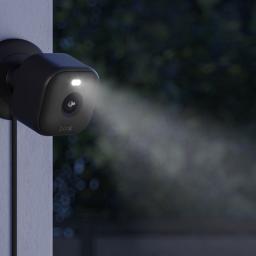 |
by Kris Holt on (#70Z41)
If you're in the market for a budget-friendly home security camera (or even several), the Blink Mini 2 may be worth considering. A two-pack of the cameras is on sale at Amazon as the bundle has dropped from $70 to $28. That's a discount of 60 percent, which is certainly nothing to shake at. This is also a better price than the $35 we saw for the cameras during Prime Day. Amazon recently revealed a newer version of the Blink Mini that records 2K footage, but the 1080p Blink Mini 2 can still get the job done. The Blink Mini 2 is our pick for the best budget security camera. It's easy to set up and it integrates neatly into the Alexa smart home ecosystem. While you need a Blink Subscription for cloud storage ($3 for one camera, $10 for as many as you like), you can pick up a Sync Module 2 or Sync Module XR to store Blink Mini 2 footage locally. A Blink Subscription also enables specialized detection and alerts (e.g. for people and pets) and features like periodic photo captures. The Blink Mini 2 is weather resistant, though you'll need an adapter to use it outdoors. Additionally, you can use the Mini 2 as a plug-in chime that sounds when someone presses a Blink Video Doorbell. A number of other Blink cameras and bundles are on sale at the moment. If you like the idea of the Mini 2 but want to use it outdoors, you can get two cameras with two weather-resistant adapters for only $48. Elsewhere, the latest Blink Video Doorbell is 50 percent off and down to $30 and Blink Outdoor 4 camera systems are 60 percent off, so you can grab one starting at just $32. Follow @EngadgetDeals on X for the latest tech deals and buying advice.This article originally appeared on Engadget at https://www.engadget.com/deals/get-two-blink-mini-2-cameras-for-only-28-right-now-144258409.html?src=rss
|
 |
by Sam Chapman on (#7150N)
A good VPN is worth paying for. Almost every service I'll recommend as one of the best VPNs is either subscription-only or supported by paid plans. Free VPNs do have their place, though, as not everybody can afford yet another subscription in the software-as-a-service hellscape we live in. Since everyone deserves privacy and flexibility online, I wanted to put together a definitive list of the best free VPNs.
|
 |
by Mariella Moon on (#7150P)
Disney's channels have gone dark on YouTube TV after the companies failed to reach an agreement by their October 30 deadline. The affected channels include ESPN, local ABC stations, ABC News, FX, NatGeo, Disney Channel and Freeform. "Last week Disney used the threat of a blackout on YouTube TV as a negotiating tactic to force deal terms that would raise prices on our customers," YouTube said in an announcement on its blog. "They're now following through on that threat, suspending their content on YouTube TV." YouTube added that Disney's decision harms its subscribers while benefiting its own live TV products, such as Hulu+Live TV and Fubo.In a statement sent to the Los Angeles Times, however, Disney accused Google's YouTube TV of choosing to deny "subscribers the content they value most by refusing to pay fair rates for [its] channels, including ESPN and ABC." Disney also accused Google of using its market dominance to "eliminate competition and undercut the industry-standard terms" that other pay-TV distributors have agreed to pay for its content. YouTube TV lost access to Disney channels back in 2021, but they were immediately able to strike a deal that restored the channels the very next day. The companies are most likely still trying to negotiate at the moment, but Google says it will offer subscribers a $20 credit if Disney channels remain offline for an extended period of time.Google has had to make several similar announcements over the past year. In February, YouTube TV almost lost Paramount content, including CBS, CBS Sports and Nickelodeon, before reaching a last-minute deal. The same thing happened in August with Fox. More recently, Google and NBCUniversal also came to an agreement at the eleventh hour, though YouTube TV lost access to Univision, the largest Spanish-language broadcaster in the US.This article originally appeared on Engadget at https://www.engadget.com/entertainment/youtube/youtube-tv-loses-espn-abc-and-other-disney-channels-113026329.html?src=rss
|
 |
on (#7150Q)
Home robots are moving way beyond Roombas. 1X unveiled its NEO helper bot this week, a terrifying $20,000 machine that can perform basic tasks after you've trained it, and more complex tasks via teleoperation. In this episode, Devindra and Engadget's Igor Bonafacic try to figure out why 1X made the Neo look like a murderbot, as well as the future they see for home robots. Also, we discuss last week's AWS outage and our over-reliance on a single cloud provider, as well as Apple's rumored push for OLED devices in 2026.Devindra also what's with John Gearty, a former Apple Vision Pro engineer, about the state of Apple's headset and the world of XR.Subscribe!
|
 |
by Mat Smith on (#7150R)
Microsoft's latest earnings report for the quarter ending on September 30 revealed that revenue from the Xbox hardware fell 30 percent year over year.Worse, in a way, this revenue decline doesn't reflect any dip in sales caused by the console's $20 to $70 price hike, since that took effect on October 3 - after this earnings report. (Oh, and Microsoft raised the price for its Game Pass Ultimate subscription from $20 to $30 in October.)Fortunately, revenue from Xbox content and services, specifically, remained relatively unchanged from the same period last year. That's the Game Pass component of Microsoft's gaming business.When Microsoft started cutting down its global workforce earlier this year, Xbox was hit hard, with the company canceling games, like a modern reimagining of Perfect Dark, and even shutting the Xbox studio working on it.More broadly, Microsoft's revenue is up, with CEO Satya Nadella posting a few highlights about the company's earnings call on X, which mostly focused on AI. He said the company will increase its AI capacity by 80 percent this year.- Mat SmithGet Engadget's newsletter delivered direct to your inbox. Subscribe right here!The news you might have missed
|
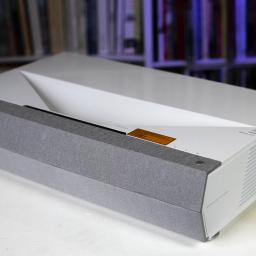 |
by Steve Dent on (#61VSG)
Projectors have come a long way from bulky, noisy boxes that only belonged in a dedicated home theater. Today's models are brighter, sharper and more flexible, making them a practical upgrade for movie nights, gaming sessions or backyard screenings. Whether you want a compact projector that fits in a backpack or a full 4K setup for your living room, there's something to match nearly every space and budget.
|
 |
on (#714QY)
OpenAI has started selling power users extra credits for its Sora AI video generation tool. An extra 10 video gens will retail for $4 through Apple's App Store. The company currently has a limit of 30 free gens per day, a rate that will likely decrease as OpenAI starts to monetize the offering. Bill Peebles, who heads OpenAI's Sora, posted on X about the changes."Eventually we will need to bring the free gens down to accommodate growth (we won't have enough gpus to do it otherwise!), but we'll be transparent as it happens," he said.
|
 |
on (#714PB)
The future of Affinity Designer, Photo and Publisher, subscription-free alternatives to Adobe Creative Cloud, was uncertain after the apps' developer Serif was acquired by Canva in 2024. Now, over a year later, the changes Canva has introduced are big, but not necessarily unwelcome. The newly relaunched Affinity by Canva combines all three apps into a single piece of illustration, photo editing and layout software, and rather than move to a subscription model as many feared, Canva's made it entirely free. Or, at least, freemium.Affinity is available now as a desktop app for macOS and Windows, with an iPadOS version on the way at some point in the future. The basic functionality of the app doesn't seem all that different from the three separate apps Serif offered before, only now you can toggle between their tools via separate Vector, Pixel and Layout tabs. Canva stresses you also have the option to mix and match tools, and save custom toolbars to use for specific types of projects, if you want.Beyond layering in chunky serif fonts, Canva's touch seems relatively light. The Affinity app now requires a free Canva account to use and offers integrations with the company's suite of tools, with a new option to send an Affinity project directly to Canva. The company is also making its Canva AI Studio tools available in Affinity, giving users the ability to automatically remove a background or use Generative Fill to edit part of a photo. How well veteran Affinity users will take to these changes remains to be seen, but they'll at least be able to continue using their existing copies of the old Affinity V2 lineup.Free sounds good, but one of the draws of the original Affinity creative suite is that you could purchase a license for Serif's individual apps and not ever have to think about it again. Canva is promising that the new Affinity will be free going forward, but a free app that requires an account and might try to upsell you on subscription-based AI features is not quite the same thing.Affinity wasn't the only Adobe competitor to be acquired in 2024. Pixelmator, a developer of popular photo and image editing tools for iOS, iPadOS and macOS, was absorbed by Apple in November that same year. The company's apps continue to be maintained, but it's still not clear if Apple plans to shift them to a subscription model in the future.This article originally appeared on Engadget at https://www.engadget.com/apps/affinity-resurfaces-as-an-all-in-one-illustration-photo-editing-and-layout-app-204833289.html?src=rss
|
 |
on (#714M2)
Disney+ is making its first foray into HDR10+ content, but access to this content will be limited at the start. About 1,000 shows from Hulu will be available with this HDR standard, although other programming under the Disney umbrella will add support at an unspecified later date. Samsung, which is a major player behind this standard for high dynamic range video, announced the news. Disney+ will first offer the HDR10+ content on Samsung Crystal UHD TVs and above for models dating back to 2018, as well as select on Samsung Smart Monitors.HDR10+ builds on the HDR10 tech for image quality. It's an alternative to Dolby Vision, and both technologies offer viewers a wider range of contrast, brightness and colors on a scene-by-scene basis. (Assuming you have a screen that supports it, of course.)Netflix announced the addition of HDR10+ support in March, but a handful of platforms have supported the standard for much longer.This article originally appeared on Engadget at https://www.engadget.com/entertainment/streaming/disney-begins-rolling-out-hdr10-support-190000237.html?src=rss
|
 |
on (#714HQ)
Nearly a decade after NASA partnered with Lockheed Martin to build the X-59, the supersonic jet has completed its first flight in California, according to a press release spotted by Gizmodo. The X-59 Quiet SuperSonic Technology (Quesst) aircraft is designed to reach supersonic speeds without the "sonic boom," and now with this latest test flight complete, NASA and Lockheed plan to conduct future tests to measure the X-59's "sound signature and conduct community acceptance testing."The flight on Tuesday was between US Air Force Plant 42 in Palmdale, California and NASA's Armstrong Flight Research Center in Edwards, California. "The X-59 performed exactly as planned," Lockheed Martin says, "verifying initial flying qualities and air data performance on the way to a safe landing at its new home."The ultimate goal for the X-59 project is to open up the possibility for commercial supersonic flights in the future. Traveling at supersonic speeds, faster than Mach 1 or around 768 miles per hour, could dramatically shorten trips transporting people and cargo. And if the Quesst design NASA and Lockheed Martin have come up with works, which includes tweaks like placing the jet engine on top of the plane and using an extremely pointy nose, it should also be much quieter. "People below would hear sonic 'thumps' rather than booms, if they hear anything at all," NASA explained in a 2023 blog post.A ban on supersonic flights over the United States went into effect on April 27, 1973, in response to concerns of property damage and noise pollution. The ban stayed in place for decades untilPresident Donald Trump ordered the Federal Aviation Administration to remove the ban in June 2025 as part of an executive order. Now there's a new urgency to NASA and Lockheed Martin's work with the X-59, and an opportunity to apply what they learn to "inform the establishment of new data-driven acceptable noise thresholds related to supersonic commercial flight over land."This article originally appeared on Engadget at https://www.engadget.com/transportation/nasas-supersonic-jet-completes-its-first-flight-in-california-183500716.html?src=rss
|
 |
on (#714HR)
By now, I have a well-established routine when I set up a new pair of Meta smart glasses. I connect my Instagram, WhatsApp and Spotify accounts. I complete the slightly convoluted steps in my Bluetooth settings to make sure Meta AI can announce incoming phone calls and text messages. I tweak the video settings to the highest quality available, and change the voice of Meta AI to "English (UK)" so it can talk to me in the voice of Judi Dench.But with the $499 Oakley Meta Vanguard glasses, there's also a new step: deciding what the customizable "action button" should do. The action button isn't even my favorite part of using the glasses, but it's a sign of just how different these shades are from the rest of Meta's lineup.While the second-gen Ray-Ban and Oakley HSTN glasses iterated on the same formula Meta has used for the last few years, the Vanguard glasses are refreshingly different. They aren't really meant to be everyday sunglasses (unless you're really committed to your athletic pursuits) but they are in many ways more capable than Meta's other smart glasses. The speakers are louder, the camera has new abilities and they integrate directly with Strava and Garmin. And while these won't replace my go-to sunglasses, there's more than enough to make them part of my fitness routine.New look, new setupThe sunglasses were very clearly made with athletes in mind. The Oakley Meta Vanguard glasses are the type of shades a lot of people probably think of when they hear "Oakley sunglasses." The wraparound frames with colorful, reflective lenses are the style of glasses you might associate with a high school track coach, or your neighbor who is really serious about cycling.The pair I tested had black frames and Oakley's orange "Prizm 24K" lenses, which aren't polarized but are favored by a lot of athletes for their ability to dial up the contrast of your surroundings. I was able to comfortably wear my pair in bright, sunny conditions and also in more overcast lower light. I also appreciate that the lenses are swappable, so you can switch them out for a dedicated low-light or different-colored lens depending on your conditions. (Extra lenses cost $85 each and will be available to purchase separately soon, according to Meta.) These glasses don't, however, support prescription lenses of any kind. I wouldn't wear these as everyday sunglasses, but I don't mind the look for a trail run. Karissa Bell for Engadget I realize this style of sunglasses won't be appealing to everyone, but the frame shape does enable a slightly different setup than what we've seen with any of Meta's other smart glasses. Most noticeably, the camera is in the center of the glasses, just above the nosebridge. The LED that lights up when the camera is on is also in the center, near the top of the frames.As with Meta's other smart glasses, you can control volume and music playback via a touchpad on the right side of the glasses, but the capture button to take photos and videos is now on the underside of the glasses rather than on top. This is meant to make it a bit easier to reach if you're wearing a hat or helmet, though I found it took me a few tries to get used to the new placement. Behind the capture button is the previously mentioned "action button," which can be customized to trigger specific functions via the Meta AI app. The capture button (left) and the action button (right) are both on the underside of the frames rather than on top. Karissa Bell for Engadget I haven't yet figured out what the best use for the action button is, though I've tried out a few different setups. On one hike, I set it up to automatically call my husband, kind of like a speed dial. During a bike ride, I had it set to record a hyperlapse video. I've also tried it out as a shortcut for launching a specific Spotify playlist or as a general trigger for Meta AI. With all of these, I appreciated that the action button allowed me to do something without saying the "Hey Meta," command. Repeating "hey Meta" to my glasses in public has always felt a bit cringey, so it was nice to have a much more subtle cue available.Did I mention it's for athletes?The Vanguard's athlete-focused features go beyond the sportier frames. The shades come with new integrations for two of the most popular run and bike-tracking platforms: Garmin and Strava. If you have a supported Garmin watch or bike computer, you can set up the glasses to automatically capture video clips based on metrics from your activity, like hitting a particular heart rate zone or other milestone. You can also ask Meta AI directly to tell you about stats from your Garmin watch, like "hey Meta, what's my pace."I don't have a Garmin watch, though I did briefly test out some of these features during my hands-on at Meta Connect. I suspect a lot of runners and cyclists may still find it easier to simply glance at their watch to see stats, but having it all available via voice commands doesn't seem like a bad thing either.Strava's integration isn't quite as deep. If you're tracking a run, hike or ride while wearing the glasses, you can overlay your stats directly onto photos and videos from your activity. This includes metrics like distance and elevation, as well as heart rate if you're also wearing an Apple Watch or other tracker that's connected to the Strava app. Here's what it looks like with a photo from a recent bike ride. You can overlay your Strava stats onto the photos and videos you record. Karissa Bell for Engadget I typically don't share stats from runs or bike rides (usually because they aren't that impressive) but it's a bit more appealing that just sharing a straight Strava screenshot. Another neat feature is that if you share a video, you can watch the stats change in real time alongside your recording. That level of detail isn't particularly interesting for a mostly flat bike ride on a city street, but I can see how it would be a lot more compelling on a more technical trail ride or in a race.My only complaint, really, is that Meta has limited these kinds of features to Garmin and Strava's platforms so far. I'd love to have support for my favorite ski-tracking app, Slopes, and I'm sure there are plenty of people who'd be happy to have an integration with their running or workout-tracking app of choice. Meta has announced some plans to bring more third-party apps onto its smart glasses platform so there might be hope here.There are other improvements, though, that will be appealing to even casual athletes. The speakers are a lot louder to account for potentially noisy conditions like a congested roadway or high-wind environment. I never had to crank the volume up anywhere near the max during my bike rides or runs, but I can say the speakers were loud and clear enough that I was able to comfortably listen to a podcast with the glasses laying next to me on the couch at full volume.The new centered camera placement is meant to make it harder for a hat or helmet to interfere with your shots, which has been a consistent issue for me with Meta's other smart glasses. The new position didn't totally solve this - I still found that my bike helmet made it into the top of my pics - but at least it's easier to crop out now that my headgear is centered over the top of my image rather than awkwardly sticking out on one side.The 12MP ultra-wide camera also comes with new video stabilization settings that make it feel a bit more like a replacement for an action cam. The glasses are set to automatically select a level of stabilization based on your motion, but you can also manually choose between low, medium or high stabilization (stabilization is locked at "medium" if you opt to record in 3K). I've mostly left it with the default settings and have been impressed with the results. The LED light is also a bit more subtle than on Meta's other smart glasses. Karissa Bell for Engadget The Vanguard glasses are also Meta's first smart glasses that can record hyperlapse and slow-motion video. Hyperlapse should be familiar to Instagram users who used the now-defunct app of the same name to record timelapse clips. Now, you can say "Hey Meta, start a hyperlapse" and the glasses will record a similar sped-up clip. My hyperlapse clips ended up looking a bit jittery, though, compared to the timelapse shots I'm used to getting with my GoPro. And unfortunately, there's no way to adjust the cadence of the video like you used to be able to with the dedicated app.My slow-motion clips, on the other hand, came out better. It's not something I'd expect to use very often during a bike ride or trail run, but the POV angle is great for recording clips of pets or kids. Meta is also planning to bring support for hyperlapse and slow-motion videos to the rest of its glasses lineup, though, so you don't need to get these particular shades to take advantage of the feature.The other major improvement is battery life. The Vanguard glasses have a notably better battery life compared with the second-gen Ray-Ban glasses or the HSTN frames (probably because the bigger frames allow for a larger battery). According to Meta, the Vanguard glasses can go nine hours on a charge with "typical use" or six hours with continuous audio playback. I was actually able to get a little over six hours of audio on a single charge, so they should hold up pretty well if you're running marathons or competing in longer races. As usual, exact battery life can vary a lot depending on how much you're using more resource-intensive features like video recording or Meta AI. The bigger frames and charging case give the glasses a battery life boost. Karissa Bell for Engadget I'm especially looking forward to seeing how these glasses will hold up during a day of snowboarding. Meta previously told me that the battery has been optimized for a wider spectrum of temperatures so hopefully the battery won't drain as quickly on the mountain as Meta's other glasses. And with increased water resistance - the shades have an IP67 rating - I wouldn't worry about dropping them in the snow.Should you buy these?While Meta and EssilorLuxottica have gotten very good at making smart glasses (sorry Mark Zuckerberg, I won't call them "AI glasses,") they are still somewhat of a niche product. And the ultra-sporty Oakley Vanguard glasses are even more niche. At $499, these are also more expensive than other models.That, understandably, may feel too steep for a pair of sunglasses you're likely only going to wear during specific activities. But if you're a dedicated cyclist, runner, hiker or [insert outdoor activity of your choice], there's a lot to like. The camera makes a lot more sense for action cam-like POV footage, and better video stabilization means you're more likely to get shots you actually want to share. Ready-made Garmin and Strava integrations are practically begging for you to brag about your latest PR or race time, which will certainly appeal to many.
|
 |
by Will Shanklin on (#714HS)
Much like Half-Life: Alyx, Thief's long-awaited return is a VR exclusive. The game was announced in June, but now we know when it will arrive. You can play the pioneering stealth franchise's new chapter, Thief VR: Legacy of Shadow, on December 4.Thief VR takes place about halfway between the events of the original trilogy and Thief (2014). You play as Magpie, a cunning thief (duh), who discovers a legendary eye artifact with a mysterious connection to the past. You're operating in a city that's under the grip of Baron Ulysses Northcrest, "a tyrant who crushes rebellion before it can take root." That all sounds like an ideal backdrop for sneaking around and stealing shit.Publisher Vertigo Games offered a glimpse at Meta Quest gameplay, which you can watch below. Thief VR will also be available on PS VR and SteamVR when it arrives on December 4. The title has a $30 list price on Steam and Meta, but can be pre-ordered now for $27. The PlayStation Store version doesn't yet have pricing or reservation info.This article originally appeared on Engadget at https://www.engadget.com/gaming/thiefs-vr-revival-arrives-in-december-181506849.html?src=rss
|
 |
on (#714HT)
We learned last month that Call of Duty would be making the leap to the big screen with a planned motion picture project. Today, Deadline reported that two of the main creative forces behind the movie will be Taylor Sheridan and Peter Berg.Sheridan and Berg previously both worked on the 2016 film Hell or High Water and 2017's Wind River. Berg was a producer on those projects, but he's perhaps better known as a writer for the football drama Friday Night Lights. Sheridan's most recent endeavor was TV series Yellowstone, and he also worked on Lioness, Mayor of Kingstown and Tulsa King. For Paramount's Call of Duty adaptation, both will produce and co-write, while Berg is currently on board to direct.Since the writers and director have only just been locked down, there still hasn't been any public discussion of what era of the lucrative CoD franchise the movie will tackle. Based on the duo's past work, something contemporary seems most likely, but it may be awhile before we have any confirmation of the story or casting.This article originally appeared on Engadget at https://www.engadget.com/entertainment/tv-movies/paramounts-call-of-duty-movie-taps-the-writers-of-yellowstone-and-friday-night-lights-175331091.html?src=rss
|
 |
on (#714HW)
Unless you're a PC nerd like me, chances are you're not familiar with Fractal Design. The company has made a name for itself in recent years by designing some of the best cases you can buy for a DIY build. In a space known for its gaudy aesthetics, Fractal's products stand out for their simplicity. Now the company is entering the crowded audio space with the $200 Scape, a gaming headset that not only looks sophisticated, but also sounds surprisingly great too.Design The Fractal Scape features an attractive mix of materials. Igor Bonifacic for Engadget I mentioned the design of the Scape first, and for good reason. It shows attention to detail, with a lot of thoughtful flourishes. The best of those is the dock that comes included with the headset. It charges the Scape inductively, so there's no need to align any charging pins, and it cleverly houses the headset's 2.4GHz wireless transmitter. When connected to your main PC, the dongle can sit inside the dock, ready to go when you want to use it with your PlayStation 5, PS4, Nintendo Switch or another PC or Mac (sorry, Microsoft fans, there's no Xbox support). The base also has wire channels to make cable management easy.Those same thoughtful design touches extend to the headset itself. On the back are four buttons, a dial and a toggle that cover nearly every function of the Scape. You can adjust the volume, mute the built-in mic, switch between 2.4GHz and Bluetooth connectivity, power the headset on or off, turn the RGB lighting on or off and switch between three EQ presets. What's more, all of the controls feel distinct and are easy to use. There's also a USB-C connection for wired audio and a three-pole headphone jack for the detachable microphone.The headset is primarily made of plastic, with a touch of brushed metal. Fractal offers the Scape in two colors - the aptly named light and dark - and despite the company's choice of materials, the headset feels undoubtedly premium. Tilt adjustment is limited - it's not possible to lay the ear pads flat on a table, for example - but the headband offers a fair amount of resistance, adding to the high-end feel.That said, the Scape could be more comfortable. Clamping force feels just about right, but there's not enough padding along the top of the headband. I found I could wear the headphones for a few hours, but I eventually had to take them off to relieve the pressure that had built up on the top of my head. I'm also not a fan of the fabric Fractal used for both the headband and ear pads. It feels scratchy and it's not great at dissipating heat. Thankfully, the high-density memory foam beneath is plush and the pads were deep and wide enough to comfortably accommodate my ears.Fractal has made it easy to swap the ear pads if needed; they come right off with just a small amount of force. For the time being, the company isn't selling replacements, but a spokesperson told me Fractal will send customers who need new pads a set for free. You just need to contact their support team.Sound quality The Scape comes with a set of custom-tuned drivers. Igor Bonifacic for Engadget Out of the box, the Scape's dynamic drivers are tuned to a soft v-shaped curve, with an emphasis on accuracy over character. Bass frequencies are punchy without being bloated, and there's nice detail to mid-focused instruments like guitars. To my ear, the one issue with the Scape's default tuning were the upper mids and treble frequencies. They weren't shouty to the point of being sibilant, but there was definitely a harshness to the vocals of singers like Jeff Buckley and Caroline Polachek who are known for their falsetto. Thankfully, this was easy to fix with the Scape's built-in EQ settings.I'll have more to say in the software section of this review, but Fractal's Adjust app allows you to make parametric EQ adjustments. This is different to most gaming headsets, which often limit people to restrictive fixed-band tweaks. Even when I used just five potential points of customization, I found I had a great deal of control over the tonality of the Scape.Overall, for casual music listening these are excellent headphones capable of covering many different genres. When it comes to gaming, they're great too - with some caveats. For singleplayer games, the default tunings are an excellent match. Playing Ghost of Tsushima, the Scape did a great job of reproducing the game's immersive sound design, allowing me to soak in all the little audio details Sucker Punch packed into its rendition of 13th century Japan. The soundstaging isn't as expansive and lush as I'm used to with my Sennheiser HD 600, but for a pair of closed-back headphones, it's above average.When it comes to competitive first-person shooters, some tweaks are required. I found all the default presets produced too much bass to easily isolate sound cues in games like Valorant. Again, Fractal's software made this simple to fix; however, the Scape can only store three presets. Some gaming headsets, particularly those from Steelseries, come with tunings for hundreds of different games. For the ultra-competitive gamer, this can be useful since every game has a different sound engine. I'm not one of those people, so I found the Scape had just the right amount of customization. A closeup of the Scape's volume dial. Igor Bonifacic for Engadget One feature you won't find on these headphones is active noise cancellation (ANC). Don't get me wrong, ANC is great, but I also didn't feel like the Scape was a worse product without it. My girlfriend is a Pelton fanatic and she does all of her daily classes without wearing headphones in our small apartment. In that situation, the Scape's passive noise isolation was enough to block the loud music coming from those workouts.That said, the one area where the Scape could have been better is Bluetooth connectivity. It's a 5.3 headset, but codec support is limited to SBC and AAC. If you've ever tried a pair of wireless headphones only to be disappointed by how they sounded, SBC was probably to blame. When I used the Scape over Bluetooth, there was a subtle difference, but in a beat 'em up like Absolum, the game's excellent sound design was less effective because it sounded more compressed, with more lag between what was happening on-screen and the effects that followed.I would have liked to see Fractal support more modern codecs like aptX Adaptive, but given that you need a dongle like the Creative BT-W6 to get access to those protocols on PCs and consoles, I can't fault the company for its decision. Also missing from the Bluetooth equation is multipoint support, meaning I wasn't able to connect the Scape to my PC or Switch and my iPhone at the same time.The Scape's detachable microphone is fine but uninspiring. In listening back to a chat I had with some friends over Discord, I found the Scape compressed my voice to the point where there wasn't a lot of life or nuance to it. The optional noise cancellation algorithm does a good job of filtering out nearby commotion, but does so at the expense of adding more compression. You can flip the microphone to mute yourself, and if you're feeling lazy, the Scape also has a built-in mic - though it sounds about as good as you might imagine. Still, it's handy in a pinch.Software Fractal's Adjust app is web-based and easy to use. Igor Bonifacic for Engadget I mentioned Fractal's Adjust software, but what I didn't note is that it's not an app you need to install on your computer. Instead, it's a website you can access through any Chrome-based browser. It's a small thing, but one I really appreciate. I can't count how many times I've had to troubleshoot issues with Windows that were caused by a conflict created by Logitech G Hub or NZXT Cam.The web-based software itself is simple, with two pages, named Lighting and Audio, encompassing all the options you can tweak. The Scape comes with 10 lighting themes out of the box, and like the headset itself, these presets are understated and classy. Naturally, you can also create your own lighting schemes, and the tool for doing so is fairly robust. A closeup of the Fractal Scape's EQ button Igor Bonifacic for Engadget When it comes to the EQ adjustments you can make with the Adjust app, the one thing I'll add here is any presets you save are stored on the Scape, so they're available everywhere you want to use the headset. That was great because it meant I didn't need to Alt-Tab out of a game to switch the headset to a more competitive tuning.The one area where Fractal's software feels lacking is when it comes to microphone controls. It's possible to adjust sidetone (the volume of your mic input as heard through the headset) and enable microphone noise cancellation, but that's it. It'd be nice if it was possible to configure those settings for the two mics independently of one another, but the software doesn't support that right now.Battery lifeAccording to Fractal, the Scape can go up to 40 hours on a single charge with RGB lighting off. With the feature turned on, battery life drops to about 26 hours. I'll be honest, I had a tough time putting those claims to the test because of how easy it is to charge the headset. As best as I can tell, those estimates are accurate. I managed to get three days of battery life from the Scape with the RGB lights turned on and about eight hours of use each day.One nice touch: when you tap the power button, the RGB lights will briefly illuminate to indicate how much battery life the Scape has left. Those same lights will turn off when you place the headset to charge so that they're not distracting.The competitionWith the Scape, Fractal has entered a crowded market. That said, the Scape is competitive with some of the best gaming headsets you can buy right now. At $200, it's $100 cheaper than the Audeze Maxwell, Engadget's pick for the best premium gaming headset. The Scape doesn't sound as good as the Maxwell or offer LDAC support for Bluetooth connectivity, but it's lighter and charging is easier thanks to the included charging base. If you ask me, the Scape also looks a lot better too.If you can't live without ANC, your best bet is Razer's BlackShark V3 Pro, but it costs $50 more and doesn't sound as good as the Scape. You also need to put up with Razer's annoying Synapse software. For the best mic on a gaming headset, my longstanding recommendation has been the $199 Drop PC38X. It also has one of the best default tunings for competitive gaming. However, it's a wired headset, and Drop doesn't offer a wireless option.Wrap-up The charging station also houses the Scape's 2.4GHz transmitter. Igor Bonifacic for Engadget If you can't tell by now, I think the Fractal Scape is a great gaming headset. There are models like the Audeze Maxwell that beat it in one or two categories, but for $200 the Scape is an excellent all-around package. Nitpicks about comfort aside, the Scape sounds and looks great. It's also a tremendous first effort by Fractal, and I can't wait to see what the company does next in the audio space and beyond.This article originally appeared on Engadget at https://www.engadget.com/gaming/fractal-design-scape-review-a-stellar-debut-173000007.html?src=rss
|
 |
by Andre Revilla on (#714EB)
Immersive productivity for Windows 11 is now available on the Meta Quest 3 and 3S with the latest release of Meta's Horizon OS. The feature, called Mixed Reality Link, was available on a limited basis after public previews began last year. The Windows virtual desktop experience is now rolling out to all users.After installing Mixed Reality Link on their Windows 11 PC, users will pair the machine with their Meta Quest headsets. Mixed Reality Link also supports portable, cloud-based solutions such as Windows 365 Cloud PC, Azure Virtual Desktop, Microsoft Dev Box and others. The virtual environment, which displays the equivalent of multiple high-resolution monitors, is similar to the Apple Vision Pro.The stark difference in cost between the headsets makes this a far more approachable virtual working tool for the average consumer. The Meta Quest 3S starts at $300, while the Apple Vision Pro comes out of the gate at a hefty $3,500.Facebook parent company Meta has been investing heavily in virtual reality and augmented reality technology. The company recently teased a futuristic VR headset that it says will offer VR experiences indistinguishable from the physical world" as well as Ray-Ban smart glasses with Meta AI live translation and 3K video recording.This article originally appeared on Engadget at https://www.engadget.com/ar-vr/mixed-reality-link-for-windows-11-and-meta-quest-headsets-is-now-available-to-everyone-165545794.html?src=rss
|
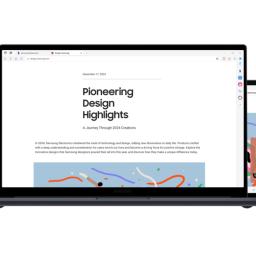 |
by Will Shanklin on (#714EC)
On Thursday, Samsung launched a desktop version of its web browser. Why bother putting its mobile browser on Windows? Well, the company offers a hint in describing Samsung Internet as "evolving from a PC browser that waits for input to an integrated AI platform." So, surprise, surprise: It's about AI.As one would imagine, Samsung Internet on Windows supports cross-platform syncing of data like bookmarks, browsing history and autofill. The company says it also prioritizes privacy and security, offering standard features like tracker blocking and a privacy dashboard.But those aren't likely the main reasons Samsung is launching a desktop web browser in 2025. (Incidentally, Samsung briefly launched Samsung Internet for Windows in 2024, before pulling it from the Microsoft Store without fanfare.) Instead, this launch appears to be about positioning it in the rapidly emerging landscape of AI browsers.AI browsers have been all the rage lately. Samsung's move follows the launch of OpenAI's ChatGPT Atlas, Microsoft's Edge Copilot Mode updates, Opera Neon's early access and general availability for Perplexity's Comet browser. Samsung says its cross-platform browser will advance its "vision for ambient AI," anticipating your needs and offering more personalized assistance. If Samsung wants to be part of that fray, it makes sense for its software to be available on the desktop, too.Samsung Internet is available (via a beta program) for Windows 11 and Windows 10 (version 1809 and up). You can sign up on the product page.This article originally appeared on Engadget at https://www.engadget.com/computing/samsungs-web-browser-arrives-on-windows-with-an-ai-future-on-its-radar-163526726.html?src=rss
|
 |
by Lawrence Bonk on (#714ED)
It's been around three and a half years since season four of Stranger Things premiered. We finally have an actual trailer for the fifth and final season of Netflix's retro-soaked adventure series. It's a good thing, as the first batch of episodes drop on November 26.As previously mentioned, this is a real trailer with tons of footage and not a teaser. It's over two minutes of Hawkins-based goodness. This is an action-packed affair that's heavy on emotion and light on the type of 1980s-style humor the show has become known for. That seems right, given the stakes are higher than ever.If you just clicked on this and don't plan on actually watching the trailer, this is when I go into some light spoilers. It looks like the gang is trapped in Hawkins following the events of season four. There's a military enclosure around the city and, surprise, Vecna is back and looking for vengeance.There's a very scary scene in which the entity looks to be controlling or torturing poor Will and we don't even know if he has a cassette player loaded with Kate Bush just out of frame. It's all very tense.While the show premieres on November 26, this isn't a one-and-done season drop like many Netflix shows. It's being split into three installments. The first batch of episodes are set for November 26, with another batch dropping on December 25. The final episode will air on December 31 and is even coming to some movie theaters. It's a holiday miracle.The showrunners do promise that this season will finally tell us exactly what the upside down is, which is something to look forward to. While Stranger Things is ending, the franchise will continue on. Netflix has some spinoffs planned for the future, but they won't have series creators the Duffer Brothers on board as showrunners. The pair recently signed a deal with Paramount.This article originally appeared on Engadget at https://www.engadget.com/entertainment/tv-movies/we-finally-have-a-real-deal-trailer-for-stranger-things-season-five-160222670.html?src=rss
|
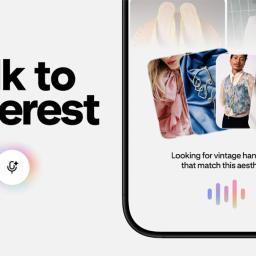 |
on (#714EE)
Pinterest is adding a new way to find clothes, furniture and other sources of aesthetic inspiration through its app. It's called Pinterest Assistant, and it's an AI-powered search and recommendation tool that uses knowledge of your Pinterest activity to tailor its responses.Whereas other search features work best when you have a specific thing you're looking for in mind, Pinterest says the Pinterest Assistant is meant to handle more open-ended requests. Asking for pillows that match your "living room decor" is supposed to be enough for the AI to surface interesting results. To do that, the Pinterest Assistant looks at the items you've saved and the boards you've created (for example, a board full of living room decor inspiration), compares it with the things Pinterest users with similar taste have saved and displays visual results tailored to you.You start a search with Pinterest Assistant by tapping on the mic icon.PinterestPinterest appears to be specifically interested in the multimodal aspect of this new feature. The main way the company imagines you'll interact with Pinterest Assistant is via a mic icon in the Pinterest app that starts a voice search. The AI assistant then takes that audio prompt and uses it to filter and analyze visual content to find the best fit. Besides surfacing items you might not have found on your own, Pinterest says the whole process should be "closer to how people shop in real life."Rolling out its own AI features puts Pinterest in an interesting place when it comes to AI content on its platform. Users have complained that the growing amount of AI-generated material on Pinterest has made it hard to find real things to buy or add to a board. In May, the company started labeling AI content in the app to make finding real items easier, and earlier in October it added a way to "dial down" the amount of AI generated content users see in the app. Pinterest Assistant isn't necessarily a solution for an AI slop problem the company is struggling to solve, but it might help users who are sick of sifting through AI content anyway.Pinterest Assistant begins rolling out in beta today to users in the US who are 18 and over, with wider availability coming in the next weeks and months.This article originally appeared on Engadget at https://www.engadget.com/social-media/pinterest-has-its-own-ai-assistant-now-160000183.html?src=rss
|
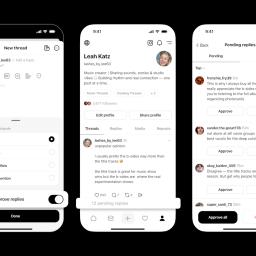 |
on (#714EF)
Social media conversations can be vastly more enjoyable when you pick and choose who you're talking with. Today, Threads is adding more controls that let users determine who can reply to their posts.One new feature is Reply Approvals, where the user will get a first look at responses before allowing them to appear publicly. The approval option can be turned on for individual posts rather than as a blanket policy for more granular control over replies. Threads is also adding new filters for viewing post replies. Now you can look at replies just from other Threads users you follow or sort them by mentions.Threads has already had a busy week. Earlier this week, the social network introduced its take on ephemeral "ghost" posts, akin to the limited-time visibility features on Instagram Stories and many other platforms. According to parent company Meta's third-quarter earnings call, Threads has grown to 150 million daily active users.This article originally appeared on Engadget at https://www.engadget.com/social-media/threads-is-making-it-easier-to-hide-replies-you-dont-like-154500456.html?src=rss
|
 |
on (#713GF)
Amazon Games is winding down support for New World: Aeternum amid layoffs in the division and even deeper job cuts across its parent company. The game debuted on PC in 2021 and it landed on PS5 and Xbox Series X/S just over a year ago."After four years of steady content updates and a major new console release, we've reached a point where it is no longer sustainable to continue supporting the game with new content updates," Amazon Games wrote in a blog post. "The recently launched Season 10 and Nighthaven update will serve as the final content release for New World on PC and consoles. It is only after much consideration that we've reached this decision."Players will still be able to buy New World for now, and it will remain available to PlayStation Plus subscribers on the Extra and Premium tiers "until further notice." Amazon is making this month's Nighthaven expansion available to everyone for free too.The company said it will keep the game's servers up and running through 2026, "allowing our community time to continue their adventures in Aeternum." In terms of how long fans will be able to keep playing the game, Amazon said it will provide more details about "what to expect in the coming months." It pledged to "provide a minimum of six months' notice before making any changes that impact your ability to play New World: Aeternum."According to Bloomberg, Amazon told staff in a memo this week that, as part of widespread layoffs, it would dial back work on big-budget games, especially MMOs - a category that New World falls under. Updates for Throne and Liberty and Lost Ark - MMOS that Amazon publishes but are developed externally - will continue, the company confirmed to MassivelyOP.Amazon did not comment on the status of a Lord of the Rings MMO that's been in the works for a while. However, according to Eurogamer, a former Amazon senior gameplay engineer wrote in a since-deleted LinkedIn post that they were laid off alongside my incredibly talented peers on New World and our fledgling Lord of the Rings game (y'all would have loved it)."Amazon Games vice president Christoph Hartmann told me last year that Amazon started its big push into games with MMOs because it saw an opportunity. At the time, there weren't too many titles in that genre popping up. However, he noted that "we're evolving out of the MMOs" into other genres, hinting then that the division was changing focus. (Amazon's first AAA game, the free-to-play shooter Crucible, didn't last long after its debut in 2020.)New World is still a popular game. It got off to a blistering start, with a peak concurrent player count of 914,000 on Steam. This past weekend, it at one point had nearly 50,000 concurrent players on that platform. It was also one of the highest grossing games on Steam in 2021.And yet it seems that Amazon's games division will now focus more on Luna, the cloud service for which it rolled out an overhaul just last week. It reportedly plans to keep releasing casual and AI-focused games" for Luna, such as Courtroom Chaos: Starring Snoop Dogg, which puts an AI-generated version of the rapper in a Judge Judy-type role for court case-style debates between players. Amazon's most recent game for PC and consoles is King of Meat, a co-op dungeon-building platformer that has so far reached a peak Steam concurrent player count of just 253.Update, October 30 11:02AM ET: Updated with details about the Lord of the Rings game's possible cancellation.This article originally appeared on Engadget at https://www.engadget.com/amazon-is-winding-down-its-still-popular-new-world-mmo-amid-mass-layoffs-150500426.html?src=rss
|
 |
by Sam Chapman on (#714AW)
Norton Security has some reliable products, but its VPN isn't one of them. In my Norton VPN review, I argued that it's only really worthwhile if you can get a discount on it as part of a Norton 360 package - and even in that case, you should only use it for non-sensitive activities due to some holes in Norton's comprehensive privacy policy.That's a lot of conditions, so I'd understand if you're here because you've decided Norton VPN isn't for you. Read on to learn your options for cancelling this VPN, getting a refund and replacing it with a better provider.How to turn off Norton VPN auto-renewalThe simplest way to cancel Norton VPN is to stop your subscription from automatically renewing. That way, you'll have until your plan expires to look for a new VPN. Note that the steps below are the same no matter how you got Norton VPN, whether on its own or as part of Norton 360 - though they only apply if you subscribed through the Norton website, not an app store.
|
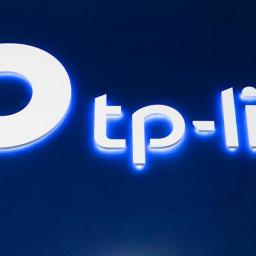 |
by Andre Revilla on (#714AX)
A number of US government agencies are backing a potential move by the Commerce Department to ban TP-Link routers, according to The Washington Post. Multiple sources familiar with internal deliberations spoke with the publication on the condition of anonymity, including a former senior Defense Department official.A months-long interagency process involving the Departments of Homeland Security, Justice and Defense took place this summer to consider the sweeping move. Investigations into the company stemming from national security concerns have been taking place since at least last year.At the heart of the potential ban is a concern that TP-Link retains ties to China, despite splitting from Chinese corporation TP-Link Technologies to become a standalone entity in 2022. A spokesperson for TP-Link denied any Chinese ties, saying "any adverse action against TP-Link would have no impact on China, but would harm an American company."US officials told The Washington Post they are concerned because under Chinese law, TP-Link must comply with Chinese intelligence agency requests and may even be pressured to push malicious software updates to its devices. US-based TP-Link Systems said the company is not subject to the direction of the PRC intel apparatus."TP-Link routers are among the most popular in the United States, with the company claiming 36 percent of US market share. Earlier this year however, former American cybersecurity official Rob Joyce testified before Congress that TP-Link's market share was roughly 60 percent, thanks in part to selling its equipment below cost in order to drive out competition.The potential ban of TP-Link products is another in a long list of bureaucratic moves or discussions that have come against the backdrop of trade negotiations between the US and China. While a potential breakthrough in these talks was achieved today, a source for The Washington Post said a ban on TP-Link products remains a bargaining chip for the administration.This article originally appeared on Engadget at https://www.engadget.com/cybersecurity/us-government-is-getting-closer-to-banning-tp-link-routers-145528317.html?src=rss
|
 |
by Matt Tate on (#714AY)
Donald Trump and China's leader, Xi Jinping, have agreed to a one-year pause on the punitive Trump-instated tariffs that are at the heart of the ongoing trade war between the two superpowers. Among the issues discussed when the two leaders met face-to-face in the South Korean city of Busan were China's chokehold on rare earth metals and the export restrictions on NVIDIA's AI chips.Trump had previously made some characteristically explosive threats that he would impose new 100 percent tariffs on imports from China as a retaliation to Xi's tightening grip on rare earths, the processing of which is almost entirely controlled by China. These materials are essential for manufacturing everything from smartphones and EVs to military equipment. As part of the (for now) temporary truce, China reportedly agreed to pause the new measures for the next 12 months in exchange for Trump lowering Chinese tariffs by 10 percent.According to The New York Times, Trump said he had discussed semiconductors during his talks with Xi, and did not rule out" the possibility of allowing NVIDIA to sell AI chips to China. The American company was allowed to resume selling its H20 chips in China in July after an initial ban earlier in the year, only for Beijing to reportedly respond by instructing its largest tech companies not to do business until a national security review had been completed. The leaders did not discuss the possible availability of Blackwell chips - NVIDIA's most advanced AI chip to date that is currently in development and possibly a motivating factor in China's apparent indifference to the H20 architecture - at their meeting in South Korea.There was also no resolution on TikTok and its future in the US. The last we heard, the Trump administration claimed to be close to agreement that would see the US gain majority ownership of the Chinese-owned social media giant where it was operating on home soil, but nothing has been finalized at the time of writing.This article originally appeared on Engadget at https://www.engadget.com/big-tech/us---china-trade-talks-see-one-year-pause-on-punitive-tariffs-140550358.html?src=rss
|
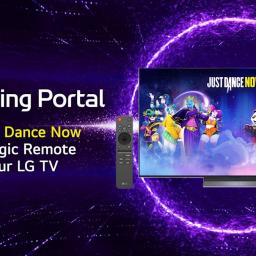 |
by Matt Tate on (#714AZ)
LG and Ubisoft have teamed up to bring the motion-controlled rhythm game Just Dance Now to LG Smart TVs. The game will be available from December in the LG Gaming Portal for LG TV users in the US and Europe running webOS 22 or later, with no additional hardware required.Just Dance Now originally launched in 2014 as a mobile app for iOS and Android, before Ubisoft brought the game to Apple TV a year later. A main series spinoff aimed at people who don't own a console, Just Dance Now offers a library of hundreds of songs that span decades of music, which you'll be able to access for free for a limited time each day. If that just isn't enough dancing time to satisfy you, you can subscribe to one of Ubisoft's paid plans or purchase song packs.Just Dance Now was originally designed to be played using your phone as a controller, with your handset of choice functioning much like the Wii Remote did in the very first Just Dance game back in 2009. In the LG Gaming Portal version of the game, the motion-sensing LG Magic Remote becomes the peripheral, so you really don't need any extra gear.Ahead of the December launch, the Just Dance Now app will be available in beta, allowing players to try three songs on the first day, followed by one daily for the remainder for the two-week trial. Ubisoft hasn't announced the release date for the beta yet.The LG Gaming Portal is gradually becoming a viable alternative to a console for people with a casual interest in games. The cloud version of Xbox Game Pass joined the platform back in April, and the new and improved GeForce NOW app introduced up to 4K 120Hz game streams on LG TVs a few months ago.This article originally appeared on Engadget at https://www.engadget.com/entertainment/just-dance-now-is-coming-to-lg-smart-tvs-140042944.html?src=rss
|
 |
on (#714B0)
Many of us would rather forget all about the annus horribilis that was 2020, but there was at least one glaringly bright spot in that year, as Animal Crossing: New Horizons provided solace for many. Almost six years after the game's debut, Nintendo is hoping you'll return to your island - or start a new one - as a Switch 2 version with a bunch of upgrades will arrive on January 15. A free update is coming to both the Switch and Switch 2 versions of the game on the same day.A 12-minute video on Nintendo's YouTube channel went over a lot of the changes. The Switch 2 version has improved graphics with support for 4K visuals in TV mode. You'll be able to play with mouse controls via Joy-Con 2. Nintendo suggests that could make it easier for you to redecorate your home, make custom designs and create messages on the bulletin board. With the Switch 2's microphone, you'll be able to use your voice to call out to the residents of your island when you pick up the new megaphone item.The online features are getting upgrades. Up to 12 players will be able to hang out on the Switch 2 version, up from eight. There's support for the Switch 2 camera feature as well - you and your friends will be able to see each other's faces above your characters as you play.The Switch 2 edition of Animal Crossing: New Horizons will be available as physical and digital versions for $65. There's an upgrade pack for the original game, which will run you $5 - that's very reasonable, especially by Nintendo standards.As for folks who are sticking with the original Switch for the time being, there are a lot of new features coming via a free update. It brings a new locale to your island in the form of a hotel on the pier. You can decorate the room as you wish based on certain themes, and get souvenirs from the gift shop as a reward. You can pick up new outfits from the hotel too. The update will also add a dream world with up to three more islands for you and your friends to play and create in. There'll be fresh craftable items and the option to expand your home storage to up to 9,000 items (up from 5,000).The update will bring new collaborations to ANCH as well. You can pick up various Nintendo consoles as decorative items, and even play games on them if you have a Switch Online subscription. Lego items are coming to the game, along with a Legend of Zelda and Splatoon crossovers that work with select Amiibo. Of course, all of these additions will hit the Switch 2 version as well. I can imagine that a bunch of people are going to spend many more hours in ANCH in 2026.This article originally appeared on Engadget at https://www.engadget.com/gaming/nintendo/a-switch-2-edition-of-animal-crossing-new-horizons-will-land-on-january-15-135000347.html?src=rss
|
 |
by Mariella Moon on (#71488)
Google Doodle is featuring something special for gamers today: A tribute to Pac-Man's 45th anniversary, just in time for Halloween. For today and tomorrow, you'll be able to play four haunted-house mazes especially designed for the event by Pac-Man's parent company, Bandai Namco Entertainment. Like other games in the franchise, you'll have to control Pac-Man and eat all of the dots in a maze without being caught by a ghost.Yes, the Ghost Gang, with Blinky, Pinky, Inky and Clyde, is back for this event. The maze's design reflects the ghost' personalities, so you can move according to how you think each one will try to get you. Blinky the red ghost, for instance, tends to actively chase Pac-Man, while the others would corner him. If you grab a Power Pallet, you'll be able to activate a time-limited event wherein you can chase and eat the ghosts, as well.To play the game, simply go to the Google homepage on desktop or fire up the Google app on mobile, whether on Android or on iOS. On a PC, you control Pac-Man with your keyboard's arrow keys, while on mobile, you'll have to swipe or press and move your finger to change directions.This article originally appeared on Engadget at https://www.engadget.com/gaming/google-celebrates-pac-mans-45th-anniversary-with-a-halloween-doodle-133034299.html?src=rss
|
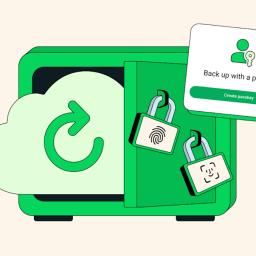 |
by Lawrence Bonk on (#71489)
WhatsApp is rolling out passkeys for backups, which is great news for anyone who has been on the platform for years. This will add another layer of security to anything that's been backed up, including chats, photos, voice notes and more.It's also convenient because passkeys don't force users to keep track of yet another password or encryption key. For the uninitiated, passkeys allow users to access personal data via biometric markers like fingerprints and face scans. However, these particular passkeys will also work with screen lock codes on certain devices.The feature is rolling out today, but it'll take a few weeks to reach every user. WhatsApp is a gigantic global platform. Once updated, folks can get started by heading to the Settings tab.This is just another layer of security for WhatsApp users, as these backups are already end-to-end encrypted. The platform has been doing that since 2021. It began offering passkey support just last year.This article originally appeared on Engadget at https://www.engadget.com/cybersecurity/whatsapp-will-let-you-use-passkeys-for-your-backups-130022640.html?src=rss
|
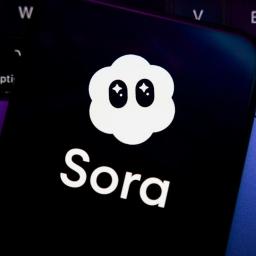 |
by Mariella Moon on (#7148A)
OpenAI has rolled out the capability to create character cameos of your pets, doodles, original personas or even objects in the Sora app, which you can put in your videos. You can start the process by going to your profile page in the Sora app, tapping on the "Create cameo" button and then uploading a video of the character (or pet) you want the model to generate. The company says just a few seconds of footage are enough, and you can even use old Sora-generated videos as reference.You can then give your character a display name and describe how you want the model to animate it. In the example OpenAI uploaded, for instance, the description for a wicked green witch character reads: "She glides with a mysterious, whimsical grace, speaks in rhymes when casting spells, and her pointed hat always tilts as if listening to secrets on the wind." You can choose permissions for each character you create. Under the "Who can use this" permissions section, you can choose between several options: Only me, People I approve, Mutuals, Everyone and Everyone (excluding specific sets of users). Whenever you want to generate a Sora video with a cameo in it, you can just tag a specific character.Sora 2 launched with a cameo feature that lets you create an avatar of yourself, but this is a new application of the capability. Cameo, the app that allows users to buy videos from celebrities, just sued OpenAI over trademark violation by using the "cameo" name. It said that OpenAI's use of the word is likely to cause consumer confusion and dilute its brand. OpenAI disagreed "that anyone can claim exclusive ownership over the word 'cameo.'"In addition to character cameos, OpenAI has introduced "stitching," allowing you to stitch several clips together and connect videos. There's now also a leaderboard that shows the most cameod and most remixed videos.
|
 |
by Steve Dent on (#7148B)
As part of an AI-focused reorganization, YouTube CEO Neal Mohan told employees that it will offer voluntary buyouts, according to an internal company memo. At the same time, he emphasized that there would be no specific role eliminations as part of new structure."Looking to the future, the next frontier for YouTube is AI, which has the potential to transform every part of the platform," Mohan wrote. "We also understand some of you may be ready for a new challenge, so we've decided now is the right time to offer a voluntary exit Program."The restructuring is designed to help YouTube focus on fast-growing areas like AI while "driving faster decision making and execution," the memo states. To that end, the platform is organizing into three separate product organizations: viewer products, creator and community products, and subscription products.Viewer products will focus on the viewer experience by making improvements to search & discovery, engagement, the living room experience and "our foundation of responsibility." Creator and community products, meanwhile, is "driving creation through genAI tools, Shorts, Live and creator support. Subscription products, as you'd expect, will operate around subscription growth across Music, Premium and OTT (YouTube TV) platforms.Mohan noted that YouTube has been the number one streamer in the US for the last two years. So far, it has signed up 125 million Premium and Music subscribers, along with 8 million YouTube TV subs. The platform has paid out $100 billion to its ecosystem (presumably, creators and recording artists).YouTube isn't the only tech giant reducing headcount while citing AI as an impetus. Amazon recently announced that it had laid off 14,000 people, while citing the need to be "lean" due to transformative technology like AI. Meanwhile, YouTube parent Alphabet announced its first-ever $100 billion quarter, largely on the strength of cloud services and search.This article originally appeared on Engadget at https://www.engadget.com/big-tech/youtube-is-offering-employees-buyouts-as-part-of-an-ai-focused-reorganization-120047466.html?src=rss
|
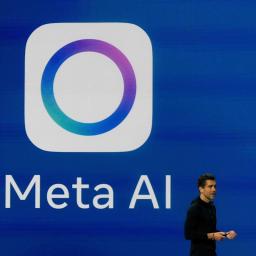 |
by Steve Dent on (#7145Q)
It looks like Meta's Vibes feed is just the start of the company's pivot toward AI slop. In an earnings call, CEO Mark Zuckerberg said that "we're going to add yet another huge corpus of content" to Meta's recommendation system, via AI's ability to create and remix content - so you're likely to see even more AI generated posts on Facebook and Instagram."Social media has gone through two eras so far. First was when all content was from friends, family, and accounts that you followed directly. The second was when we added all the creator content," he said, seemingly suggesting that AI content will be the third era.Zuckerberg added that recommendation systems that "deeply" understand AI content are "increasingly valuable" since they can "help you achieve your goals."He then nodded to Vibes, calling it an example of a new type of content enabled by AI. Retention on the feed "is looking good so far, and its usage keeps growing quickly week over week," he proclaimed. Furthermore, there are more opportunities to build "many more novel types of content aheads, as our new models become ready," Zuckerberg added. To put some numbers to Vibes takeup, Meta CFO Susan Li said that users have generated over 20 billion images in the feed to date.Meta has already introduced a number of AI features across its social media platforms. Those include in-app photo and video editing via text prompts directly in Instagram Stories, AI chatbots across WhatsApp, Messenger, and Instagram, and a standalone Meta AI app that includes an AI assistant and discovery feed.This article originally appeared on Engadget at https://www.engadget.com/social-media/meta-will-add-a-huge-corpus-of-ai-content-into-its-recommendation-system-113027353.html?src=rss
|
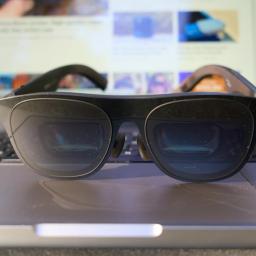 |
on (#7145R)
Forget Samsung's $1,800 Galaxy XR, the Android XR device I'm actually intrigued to see is Xreal's Project Aura, an evolution of the company's existing smart glasses. Instead of being an expensive and bulky headset like the Galaxy XR and Apple Vision Pro, Xreal's devices are like over-sized sunglasses that project a virtual display atop transparent lenses. I genuinely loved Xreal's $649 One Pro for its comfort, screen size and relative affordability.Now that I'm testing the M5-equipped Vision Pro (full review to come soon!), it's clearer than ever that Apple should replicate Xreal's winning formula. It'll be a long while before we'll ever see a smaller Vision Pro-like device under $1,000, but Apple could easily build a similar set of comfortable smart glasses that more people could actually afford. And if they worked like Xreal's glasses, they'd also be far more useful than something like Meta's $800 Ray-Ban Display, which only has a small screen for notifications and quick tasks like video chats.Xreal One Pro smart glassesDevindra Hardawar for EngadgetWhile we don't have any pricing details for Project Aura yet, given Xreal's history of delivering devices between $200 and $649, I'd bet they'll come in cheaper than the Galaxy XR. Xreal's existing hardware is less complex than the Vision Pro and Galaxy XR, with smaller displays, a more limited field of view and no built-in battery. Project Aura differs a bit with its tethered computing puck, which will be used to power Android XR and presumably hold a battery. That component alone could drive its price up to $1,000 - but hey, that's better than $1,800.During my time with the M5 Vision Pro, I couldn't help but imagine how Apple could bring visionOS to its own Xreal-like hardware, which I'll call the "Vision Air" for this thought experiment. The basic sunglasses design is easy enough to replicate, and I could see Apple leaning into lighter and more premium materials to make wearing the Vision Air even more comfortable than Xreal's devices. There's no doubt it would be lighter than the 1.6-pound Vision Pro, and since you'd still be seeing the real world, it also avoids the sense of being trapped in a dark VR headset.To power the Vision Air, Apple could repurpose the Vision Pro's battery pack and turn it into a computing puck like Project Aura's. It wouldn't need the full capabilities of the M5 chip, it would just have to be smart enough to juggle virtual windows, map objects in 3D space and run most visionOS apps. The Vision Air also wouldn't need the full array of cameras and sensors from the Vision Pro, just enough track your fingers and eyes.I could also see Apple matching, or even surpassing, Project Aura's 70-degree field of view, which is already a huge leap beyond the Xreal One Pro's 57-degree FOV. Xreal's earlier devices were severely limited by a small FOV, which meant that you could only see virtual screens through a tiny sliver. (That's a problem that also plagued early AR headsets like Microsoft's HoloLens.) While wearing the Xreal One Pro, though, I could see a huge 222-inch virtual display within my view. Pushing the FOV even higher would be even more immersive.In my review of the original Vision Pro, I wrote, "If Apple just sold a headset that virtualized your Mac's screen for $1,000 this well, I'd imagine creative professionals and power users would be all over it." That may be an achievable goal for the Vision Air, especially if it's not chasing total XR immersion. And even if the Apple tax pushed the price up to $1,500, it would still be more sensible than the Vision Pro's $3,500 cost.While I don't have high hopes for Android XR, its mere existence should be enough to push Apple to double-down on visionOS and deliver something people can actually afford. If Xreal can design comfortable and functional smart glasses for a fraction of the Vision Pro's cost, why can't Apple?This article originally appeared on Engadget at https://www.engadget.com/ar-vr/whats-next-for-vision-pro-apple-should-take-a-cue-from-xreals-smart-glasses-113000437.html?src=rss
|
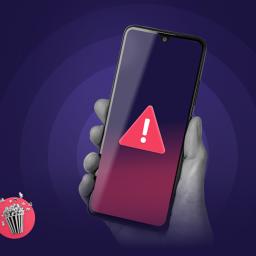 |
by Sam Chapman on (#7145S)
Proton, the company behind Proton VPN and other encrypted apps like Proton Mail and Proton Drive, just launched a new web page called the Data Breach Observatory that aims to make accurate cybercrime data more widely accessible. The Observatory is intended to be a continually updated report that records any data leak detected on the dark web, with information sourced from the underground data marketplaces themselves.The reason for the Observatory, according to Proton, is that too many studies of cyberattacks depend on organizations reporting when they've been hacked. A company might not make a data breach public for fear of backlash from customers, regulators or stockholders. Although it's impossible to tell how many breaches aren't reported, Proton believes it's a significant portion.Compounding the transparency problem, most stolen data is advertised and traded on dark web markets that are hard to trace without specialized knowledge, like how diamond thieves don't tend to fence their loot at above-board jewelry stores. In other words, while most people know that personal information is frequently stolen and leaked, it's very difficult to know how much data is getting stolen, how often breaches occur and who's buying and selling the goods.Proton's solution is to monitor the dark web itself, watching locations where data thieves go to advertise stolen information. By keeping an eye on these exchanges, Proton believes the Data Breach Observatory will be able to warn victims as early as possible, including before the targets themselves are aware of the leak. Making breach reports available in one place is also meant to educate the public about the actual size and scope of cybercrime, while making it harder for companies to keep quiet about getting hacked.Proton plans to update the Observatory in "near real time," working with a risk detection firm called Constella Intelligence. It remains to be seen whether they'll be able to keep up the workload - according to Proton's own research, around 1,571 data breaches have occurred in 2025 so far, compromising well over 100 billion records. A clearing house for reporting on all of those definitely sounds valuable, but at around five breaches a day, it'll be a busy page.This article originally appeared on Engadget at https://www.engadget.com/cybersecurity/proton-launches-data-breach-observatory-to-track-personal-info-leaks-110047833.html?src=rss
|
by Amy Skorheim on (#6AFH6)
Color is the buzziest feature in ereaders right now, but is it necessary? It makes the covers more fun, and readers of comics and graphic novels will appreciate the added hues (though they may be happier with an E Ink tablet for better image detail). Color is just one factor to consider when picking out the best ereader. The lights, screen quality, housing and buttons make a difference too. Then there's the software: Do you want to stay in the Kindle ecosystem or get a device that can handle lots of apps? We tested more than a dozen ereaders to come up with our recommendations. This guide also points out ways to get the most out of your new e-book companion once you pick your favorite.
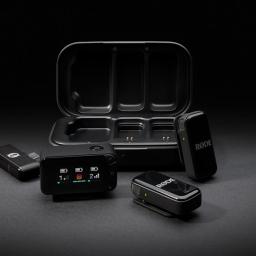 |
by Daniel Cooper on (#713Y5)
Rode's range of tiny, portable microphones are a mainstay for creators looking for crisp audio on their phone videos. The company knows that those using digital cameras probably want that same blend of portability and performance for their own footage. That's why it's launching the new Wireless Micro Camera Kit, which outputs audio over USB-C or via a 3.5mm line-in. As with the Wireless Micro, the new set includes a pair of microphones and a transmitter that all sit in a portable charging case. You'll also find a pair of furry wind screens should you need to film in less than favorable weather. But unlike that model, the receiver comes with both a cold shoe mount and a 1.1-inch AMOLED screen. That will let you configure the audio setup on the fly, plus you'll get battery data for all three units and an on-screen visualizer. Rode It would appear that Rode noticed user gripes that its own kit was being shown up by DJI's Mic Mini, which had a transmitter with its own 3.5mm jack and shoe mount for camera connection. In addition, Rode has added Bluetooth Direct Connect to the microphones so they'll connect to your iOS phone directly via the Rode Capture App. Which, like the 3.5mm, was a notable omission from the older hardware. In terms of battery life, Rode says the kit and the charging case will hold up to 21 hours of use before you need to head back to an outlet. Plus, to sweeten the deal, Rode is also throwing in one of its first-generation USB-C smartphone receivers into the package for free. Rode's Wireless Micro Camera Kit is available to purchase today for $149. This article originally appeared on Engadget at https://www.engadget.com/mobile/rodes-latest-wireless-microphones-now-work-with-digital-cameras-025338766.html?src=rss
|
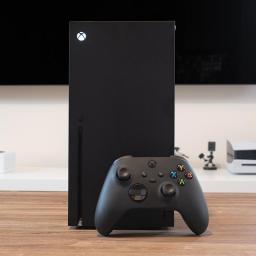 |
by Mariella Moon on (#713Y6)
It hasn't been a good year for Xbox so far. Microsoft has released its earnings report for the quarter ending on September 30, and it has revealed that its revenue from the Xbox hardware fell by 30 percent year-over-year. Take note that the revenue decline doesn't reflect any dip in sales caused by the console's $20-to-$70 price hike, since that took effect on October 3. Similarly, Microsoft only raised the price for its Game Pass Ultimate subscription from $20 to $30 in October.Meanwhile, revenue from Xbox content and services remained relatively unchanged from the same period last year. Microsoft says it saw growth from Xbox subscriptions and third-party content, but it was "partially offset" by the decline in first-party gaming content.The Xbox division was one of the most affected teams when Microsoft started cutting down its global workforce earlier this year, with the company cancelling games that were being developed for the console. Microsoft scrapped the modern reimagining of Perfect Dark, a first-person shooter from the year 2000, and even closed down the Xbox studio working on it. The company also cancelled Everwild, a project that had long been in development by Xbox studio Rare, also in the midst of its mass layoffs.Overall, Microsoft's $77.7 billion revenue was 17 percent higher compared to the same period last year, and its operating income was up by 22 percent. Microsoft CEO Satya Nadella posted a few highlights about the company's earnings call on X, mostly focusing on its AI efforts. He said that the company will increase its AI capacity by 80 percent this year and will double its data center footprint over the next two.
|
 |
by Danica Creahan,Liz Kocan on (#713KP)
The 2025 Fall Classic is tied up again after Game 4 between the Los Angeles Dodgers and the Toronto Blue Jays saw Toronto dominate to win 6-2. The World Series continues with one more game in Los Angeles tonight - Wednesday, Oct. 29 - at 8PM ET/5PM PT. The World Series odds favor the Dodgers ahead of tonight's game. Every 2025 MLB World Series game will air on Fox and Fox Deportes. Of course, Fox is a "free" over-the-air channel, so any affordable digital antenna will pull in the game if you live close enough to a local affiliate. But if that's not an option, here's a full rundown of how to watch the Dodgers vs. Blue Jays World Series, even without cable. How to watch the L.A. Dodgers vs. Toronto Blue Jays, Game 5 You can stream Fox on any live TV streaming service that airs Fox local stations, including DirecTV, Fubo and Hulu + Live TV. MLB World Series games will also be available on Fox's new streaming platform, Fox One. More ways to watch the 2025 World Series How to watch the MLB World Series from Canada: When is the Dodgers vs. Blue Jays game time? Game 5 of the Dodgers vs. Blue Jays World Series is tonight, Oct. 29 at 8PM ET/5PM PT. What channel is playing the Los Angeles Dodgers vs. Toronto Blue Jays? Every game in the 2025 World Series between the Los Angeles Dodgers and the Toronto Blue Jays, will air on Fox and Fox Deportes. When is the 2025 World Series? Game 5 of the World Series between the Dodgers and Blue Jays is scheduled for Oct. 29, 2025. Los Angeles Dodgers vs. Toronto Blue Jays World Series schedule All times Eastern. Series tied-2-2.
|
 |
by Will Shanklin on (#713V8)
Chalk this one up under "The most clever (alleged) legal sidesteps this side of Tony Soprano." On Wednesday, The Guardian published a report about a so-called "winking mechanism" regarding Israeli cloud computing contracts with Amazon and Google. The stipulation from 2021's Project Nimbus is said to require the US companies to send coded messages to Israel. According to the report, whenever Google or Amazon secretly complies with an overseas legal request for Israeli data, they're required to send money to Israel. The dollar amount indicates which country issued the request.The coding system reportedly involves country dialing prefixes. For example, if Google or Amazon hand over Israeli data to the US (dialing code +1), they would send Israel 1,000 shekels. For Italy (code +39), they would send 3,900 shekels. (Out of morbid curiosity, I discovered that the highest dialing code is Uzbekistan's +998.) There's reportedly even a failsafe: If a gag order prevents the companies from using the standard signal, they can notify Israel by sending 100,000 shekels.The Guardian says Microsoft, which bid for the Nimbus contract, lost out in part because it refused to accept some of Israel's terms.In a statement to Engadget, an Amazon spokesperson highlighted customer privacy. "We respect the privacy of our customers, and we do not discuss our relationship without their consent, or have visibility into their workloads," they wrote.The Amazon spokesperson denied that the company has any underhanded workarounds in place. "We have a rigorous global process for responding to lawful and binding orders for requests related to customer data," they said. "[Amazon Web Services] carefully reviews each request to assess any non-disclosure obligations, and we maintain confidentiality in accordance with applicable laws and regulations. While AWS does not disclose customer information in response to government demands unless we're absolutely required to do so, we recognize the legitimate needs of law enforcement agencies to investigate serious crimes. We do not have any processes in place to circumvent our confidentiality obligations on lawfully binding orders."Google also denied any wrongdoing. "The accusations in this reporting are false, and imply that we somehow were involved in illegal activity, which is absurd," a company spokesperson said. "As is common in public sector agreements, an RFP does not reflect a final contract. The idea that we would evade our legal obligations to the US government as a US company, or in any other country, is categorically wrong.""We've been very clear about the Nimbus contract, what it's directed to, and the Terms of Service and Acceptable Use Policy that govern it," the Google spokesperson continued. "Nothing has changed. This appears to be yet another attempt to falsely imply otherwise."We also reached out to the Israeli government for a statement, and we'll update this story if we hear back. The Guardian's full report has much more detail on the alleged leak.Update, October 29, 2025, 6:29 PM ET: This story has been updated to add a statement from a Google spokesperson.This article originally appeared on Engadget at https://www.engadget.com/big-tech/google-and-amazons-israeli-cloud-contracts-reportedly-require-them-to-sidestep-legal-orders-164635805.html?src=rss
|
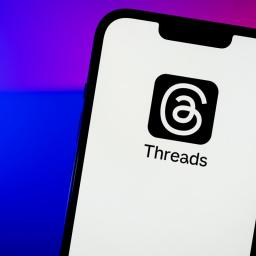 |
on (#713RA)
Threads has grown to 150 million daily active users. Mark Zuckerberg shared the latest milestone for the company's text-based app during Meta's third-quarter earnings call. The company previously reported in August that Threads had reached more than 400 million monthly users.Zuckerberg, who has mused that Threads could become Meta's next billion-person app, said that it was "on track to become the leader in its category." He also said that time spent in the app had increased by 10 percent, which he credited to improvements to the company's AI recommendation systems.On Wednesday, Instagram chief Adam Mosseri said that Meta was also "exploring" algorithm personalization controls for Threads. The company is currently testing the ability to "tune" Instagram's algorithmic recommendations.As Threads has grown, Meta also confirmed that ads are ramping up on the platform. During the call with analysts, Meta CFO Susan Li said that "ads are now running globally" in the Threads feed. The company had previously brought ads to Threads users in 30 countries following a small test earlier this year. This week, the company also announced that it would expand the type of ad formats on Threads, including video ads. "We're following our typical monetization playbook of optimizing the ads formats and performance," Li said.
|
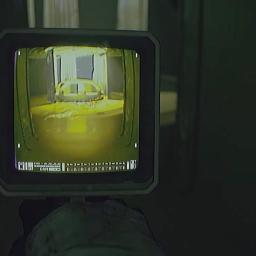 |
on (#713RB)
Sometimes, game development is a labor of love. Other times, it's an agonizing experience akin to pulling teeth. More than a decade after first announcing the project, Lunar Software and Raw Fury appear to be in the home stretch with their project Routine. The sci-fi horror game has been given a December 4, 2025 release date. For their sakes, I hope it comes to pass.The duo first announced Routine all the way back at Gamescom in 2012 and gave it a 2013 release date. After that window came and went, the project went dark until Summer Game Fest 2022, with promises that the game a) still existed and b) had been fully remade for the new generation of gaming hardware. If the current schedule holds, Routine will be on Steam and Xbox, including day one availability on Game Pass, by the end of this year.The Aliens vibes are strong in the brief release date teaser. Think film grain effects, janky gadgets and of course the looming threat of death around every corner. The player will explore an abandoned lunar base to try and figure out how everything went horribly wrong before your arrival. The answer seems to involve murderous robots that would make Weyland-Yutani proud.This article originally appeared on Engadget at https://www.engadget.com/gaming/13-years-after-it-was-announced-sci-fi-horror-game-routine-has-a-release-date-of-december-4-205604793.html?src=rss
|
 |
on (#713KN)
Microsoft's Azure cloud service is recovering from an outage that affected key apps and services like Microsoft 365 , Xbox and Minecraft. All three showed spikes in outage reports on DownDetector around 12PM ET, and the Azure status page indicates that Microsoft first observed technical issues around 12PM ET.In its most recent Azure status update at 3:57PM ET, Microsoft says that it initiated the deployment of our last known good configuration,'" and that customers may have begun to see initial signs of recovery." The company is continuing to reroute traffic through healthy nodes" and believes that Azure should be fully recovered by 23:20 UTC," or 6:20PM ET.At the peak of the outage, users on Reddit reported issues loading Game Pass on Xbox consoles, along with limited access to productivity and enterprise apps. The outage also appeared to affect Microsoft support pages and some airline websites.
|